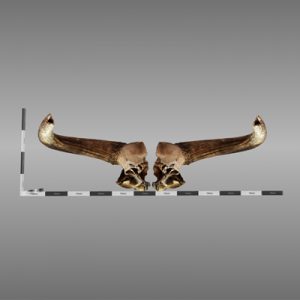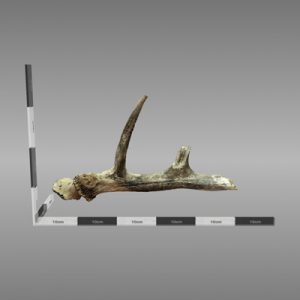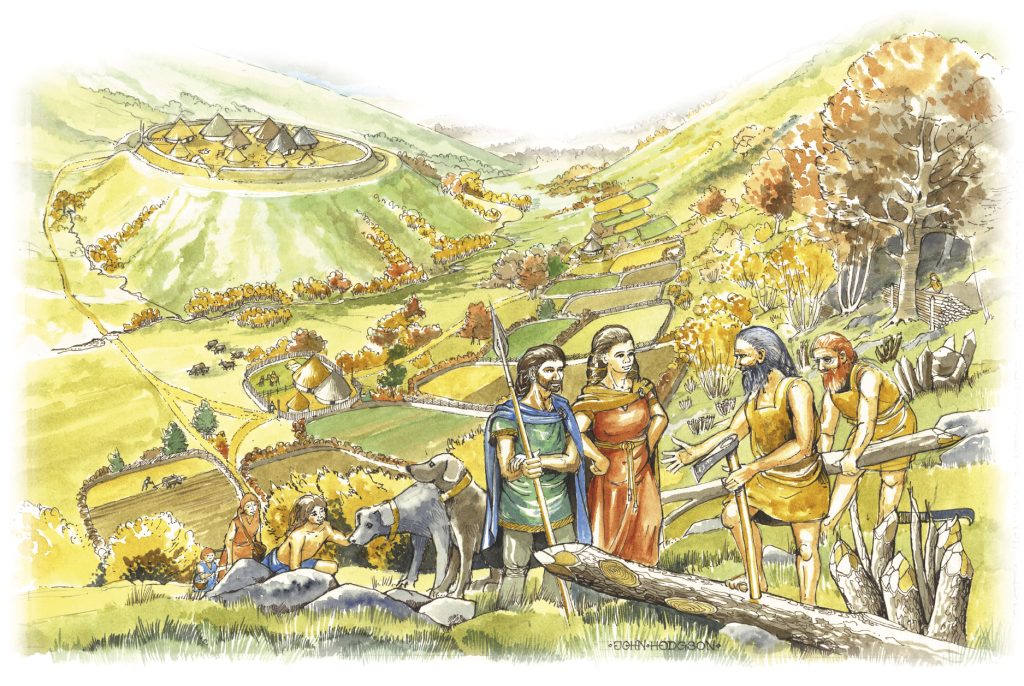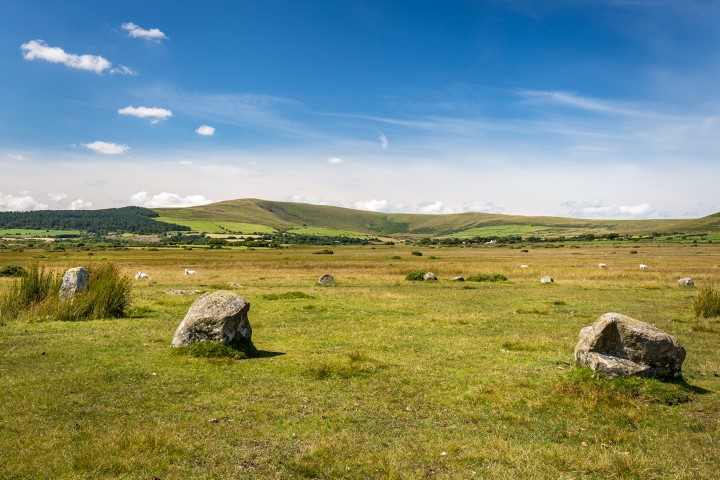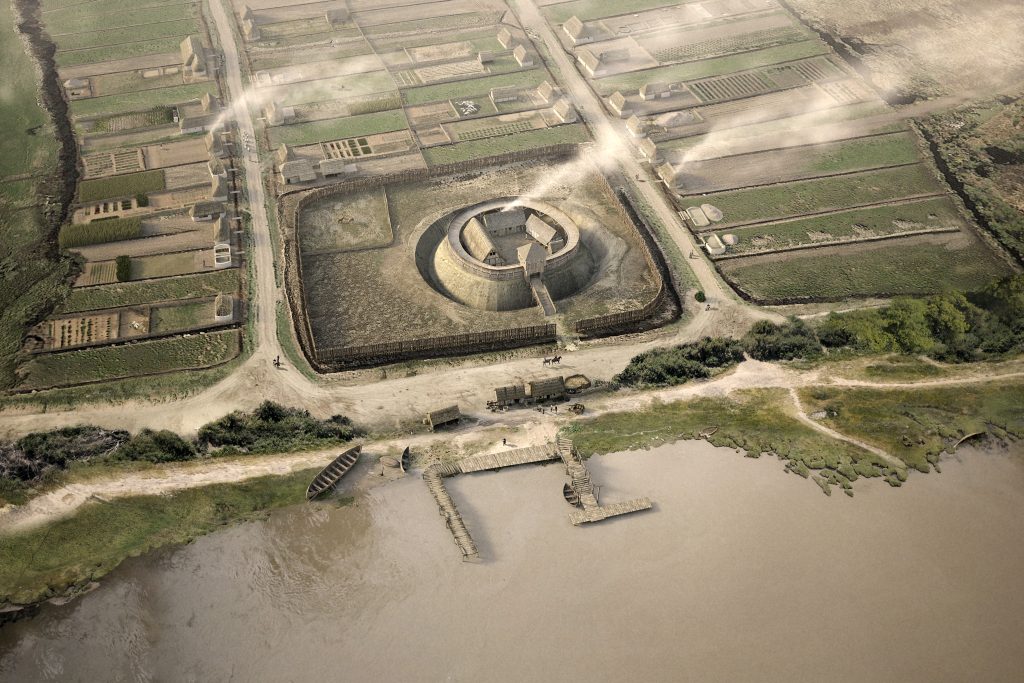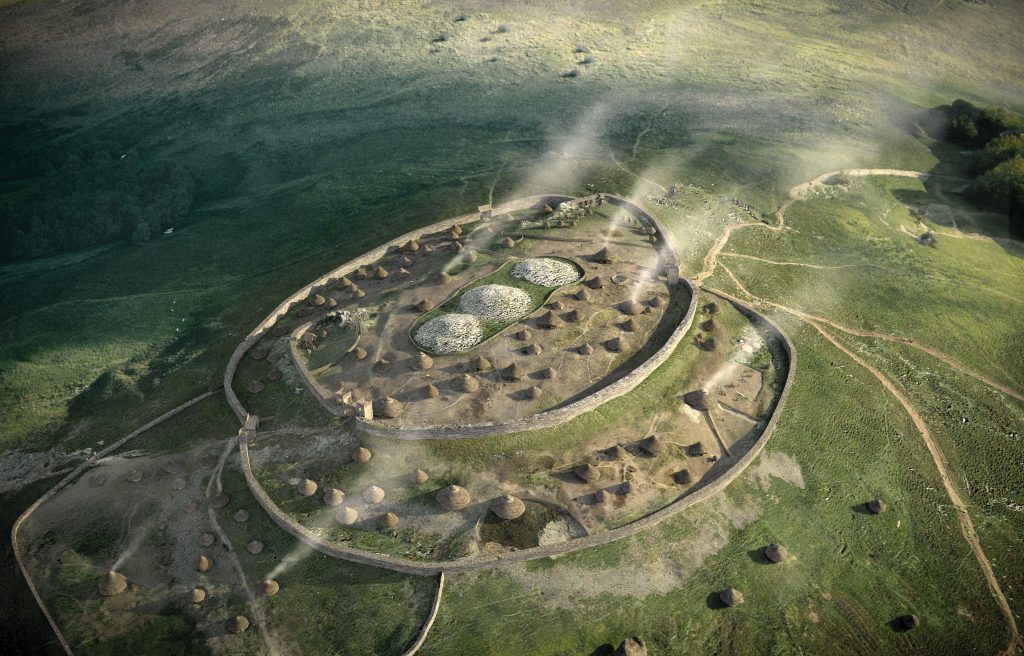In 2014 huge storms ripped the sand away from Whitesands beach. Overnight, the stumps of an ancient woodland were uncovered. That forest was filled with wild animals.
Click on the images below to view interactive 3D reconstructions.
Aurochs
The cow’s wild ancestor. This aurochs horn was found at Whitesands. The aurochs used its long horns to defend itself.
Very big and very strong! A bull could grow up to 1.8m tall and weigh up to 1000kg.
Vegetarian – grazed on grasses and shrubs, making clearings.
Their heavy hooves trampled down dead plants, helping return nutrients to the soil. Birds used aurochs hair to line their nests.
Dung beetles fed on aurochs poo and mixed it into the soil. Became extinct in Britain about 3,500 years ago, probably due to hunting and early farming. Some aurochs might have inter-bred with the domesticated cows that the early farmers brought to Britain from Europe by boat.
European Brown Bear
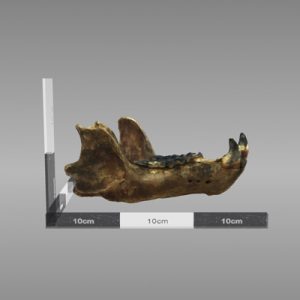
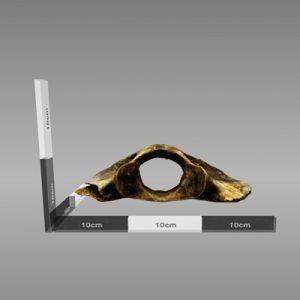
Brown Bear jaw Brown Bear spine
Brown bears tend to live in woodlands where there a variety of plants and shrubs grow beneath the trees.
Bears are omnivores – they mainly eat grasses, herbs, fruit, berries and roots, as well as ants, honey, beeswax, insect larvae, small rodents, fish and carrion. Sometimes they might hunt larger animals for meat.
The bear’s diet means they disperse seeds – with a generous helping of dung, a natural fertilizer. Because bears lived in the ancient forest, we can tell that environment was probably in good health, with a wide variety of bear food available.
Brown bears became extinct in Britain about 1,500 years ago. They were hunted for their fur and meat. Habitat loss also played a part.
Both sides of this bear’s lower jaw bone were found at Whitesands. The 3D model shows how they fit together.
The bear used its sharp teeth – or canines – to catch and grab hold of prey. The flat molars were for crunching and grinding down plant based food.
Next to the jaw bone was the bear’s atlas. The atlas is the uppermost part of the spine, which connects to the skull. The holes channel nerves, blood vessels and other soft tissue along the spine to the brain.
Red Deer
This antler is very large. The size tells us about temperatures at the time the deer was alive.
In colder climates, animals tend to be bigger. The antler is also quite heavy and in real life it sparkles. It has started to mineralise, or become a fossil.
Notice the tip of the antler is damaged. Why do you think this might be?
